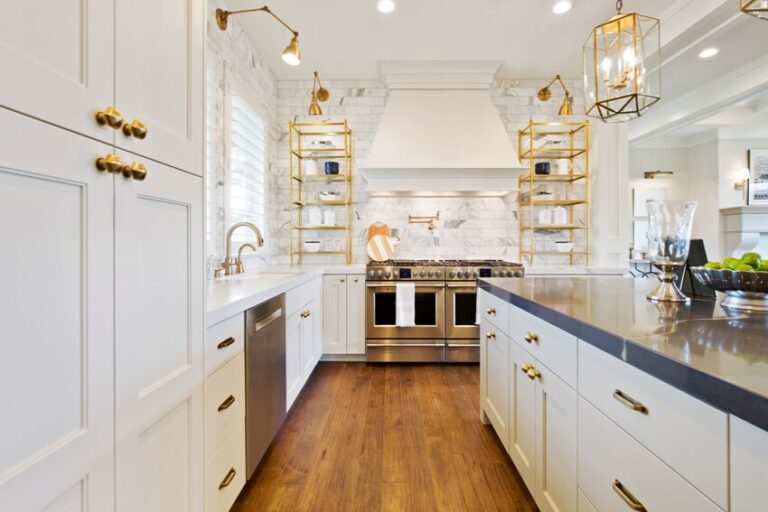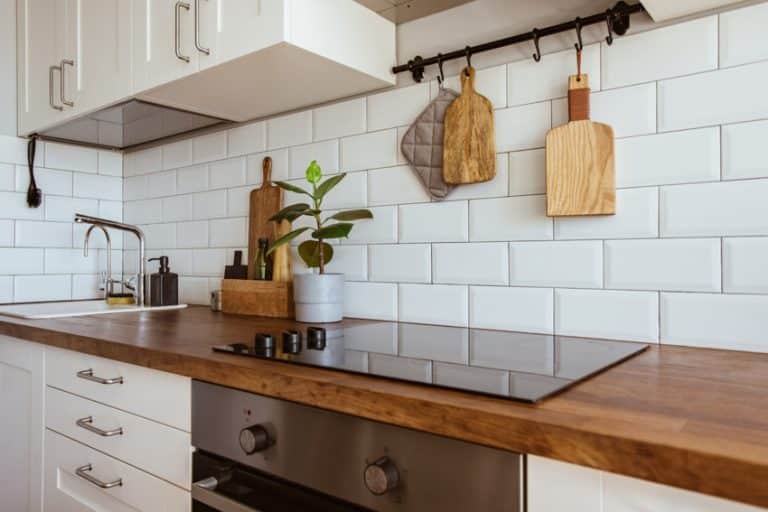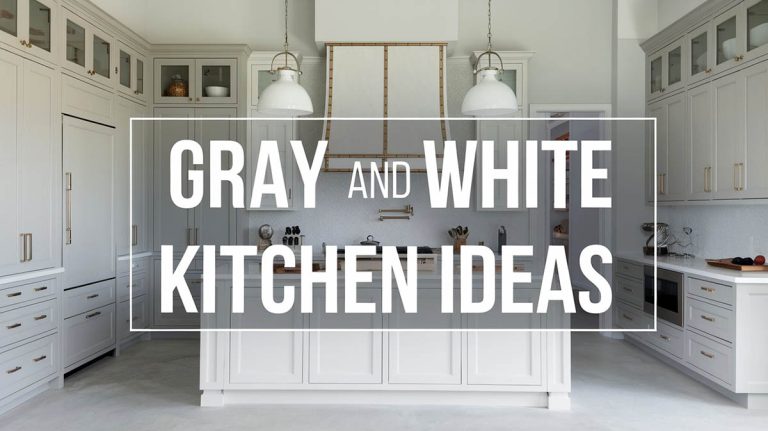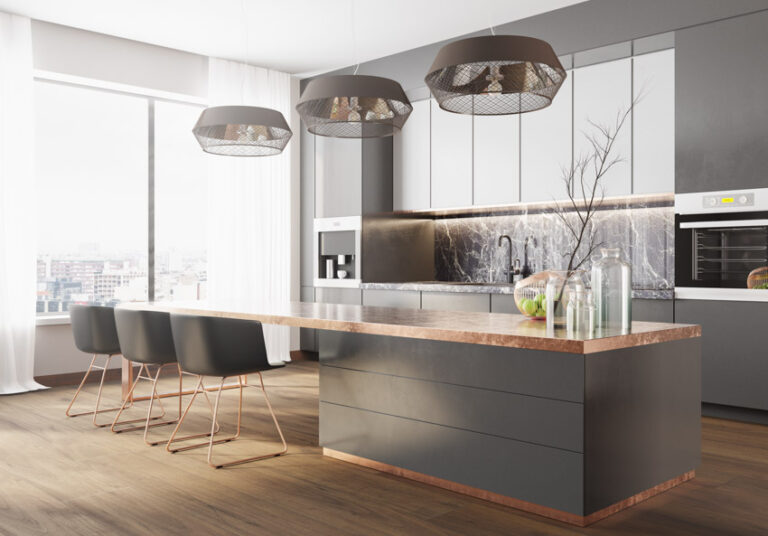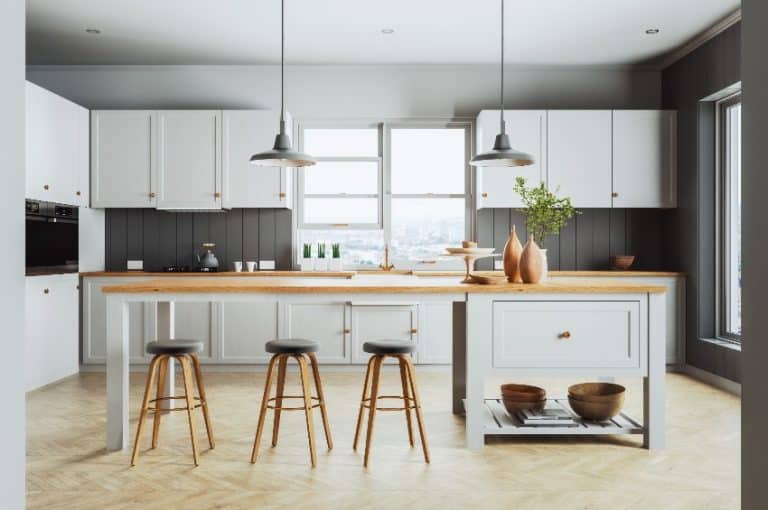Thermofoil Cabinets (Pros and Cons)
Thermofoil cabinets design guide, including what they are, pros and cons, durability, maintenance, peeling solutions, and top manufacturers of this type of cabinetry.
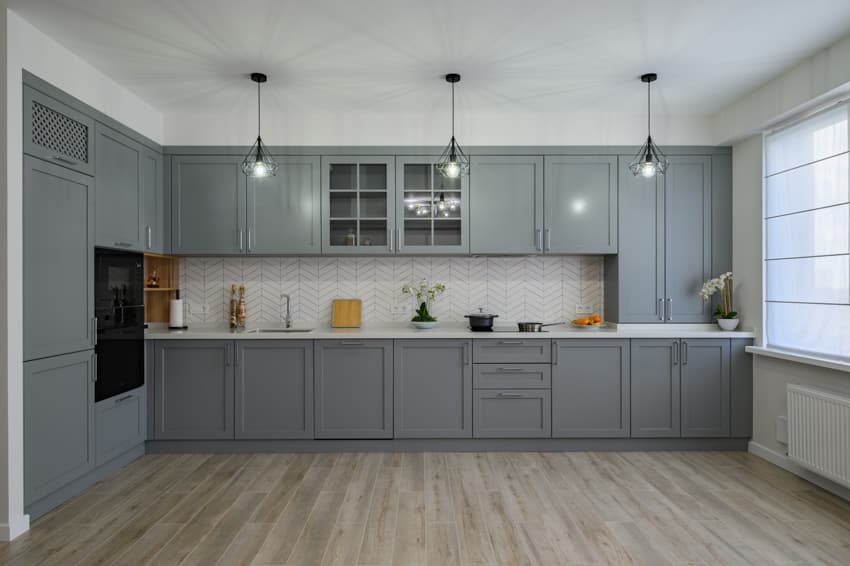
That said, furniture and fixture manufacturers came up with different cabinet options, from designs to materials. Among these are thermofoil cabinets. Because of the daily wear and tear of the furniture in bathrooms and kitchens, homeowners turn to cabinet materials that are budget-friendly yet durable.
This article draws back the curtain into the world of thermofoil cabinets to learn what makes them a trendy interior design choice.
What Are Thermofoil Cabinets?
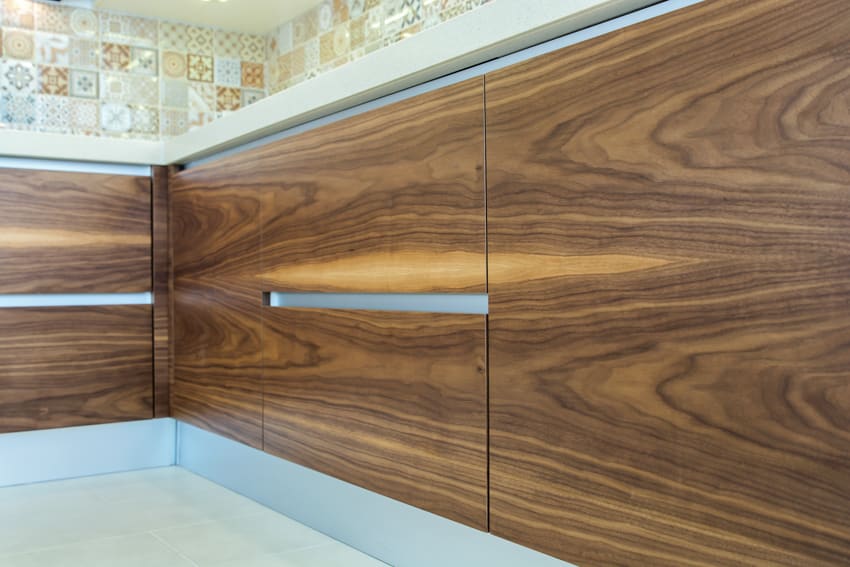
This process makes the cabinetry cost-effective because the coating is applied to the front of doors and drawers. Thermofoil cabinets come in many different styles, finishes, and colors.
Thermofoil is often confused with laminate, but the former uses a vacuum pressing system, while the latter adheres to the MDF surface using glue.
Thermofoil Vinyl Cabinet Pros and Cons
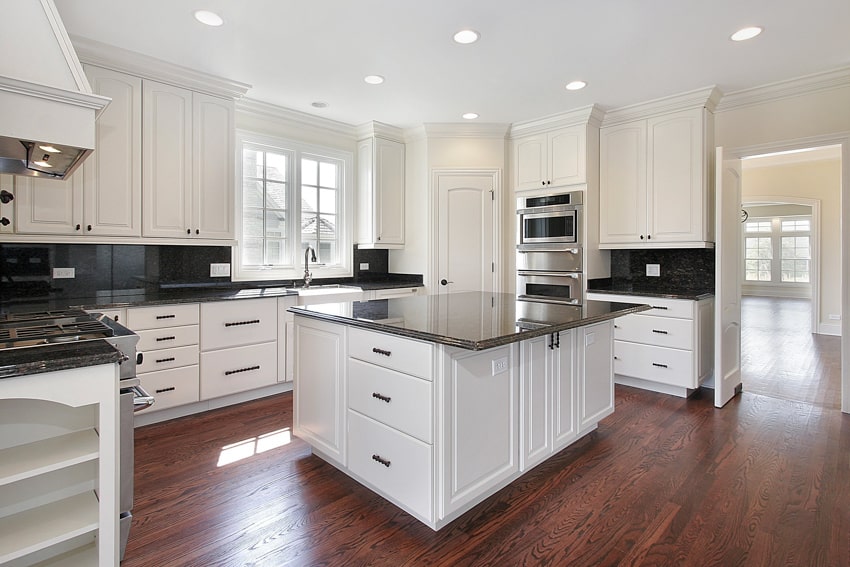
Thermofoil Cabinets Pros
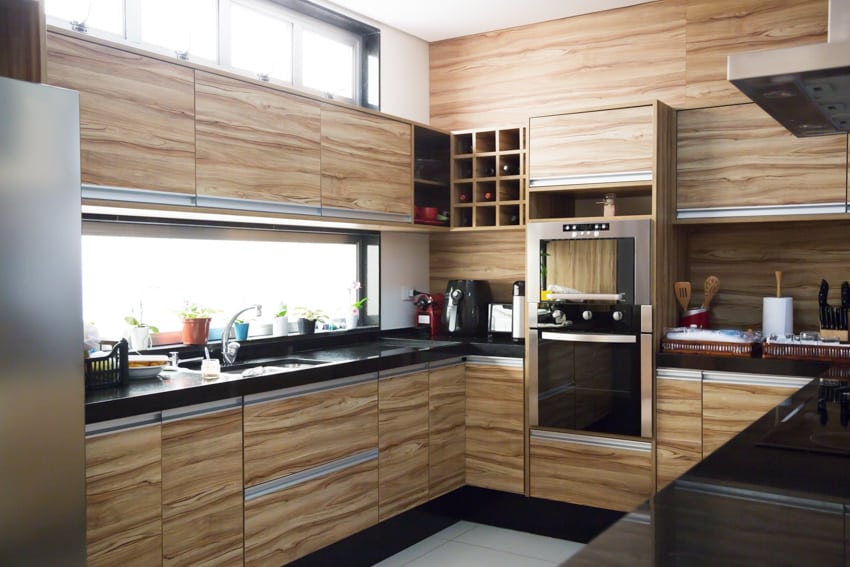
Modern Aesthetics
Modern is such a broad word in the world of interior design. It can pertain to anything, from modern minimalist to modern industrial design.
Thermofoil is a versatile material that can fit any of your modern aesthetic needs, as they are available in a variety of colors, textures, and designs.
In terms of kitchen trends, homeowners lean more toward having cabinets that blend with their walls and appliances to give a cleaner and sleek look. Because of this, many opt for white thermofoil cabinetry with a glossy finish.
You may also want to incorporate wood design into your space without having to use actual wood. Fortunately, there are wood designs that even mimic the grain or texture of the wood.
Finally, a metallic finish is on the menu. You can choose rose gold, copper, or silver in different hues. A metallic finish can make your space look chic and luxurious.
Effortless Installation
These are quick to install. Once they arrive, you can assemble and fit them into your space. There is no need for sanding, painting, or sealing these bathroom or kitchen cabinets.
Low Maintenance
These are durable, making them effortless to maintain. They are resistant to most chemical cleaning products, so you don’t have to worry about chemical burns or stains.
These are also nonporous, so water cannot penetrate the MDF easily. The same applies to dust and dirt. Wiping off dirt and grime every day can keep them pristine.
Widely Accessible and Affordable
Massive production of these storage spaces means they are easy to source. They are also affordable, ranging between $300 and $600 per linear foot, excluding labor and other installation materials.
Thermofoil Cabinets Cons
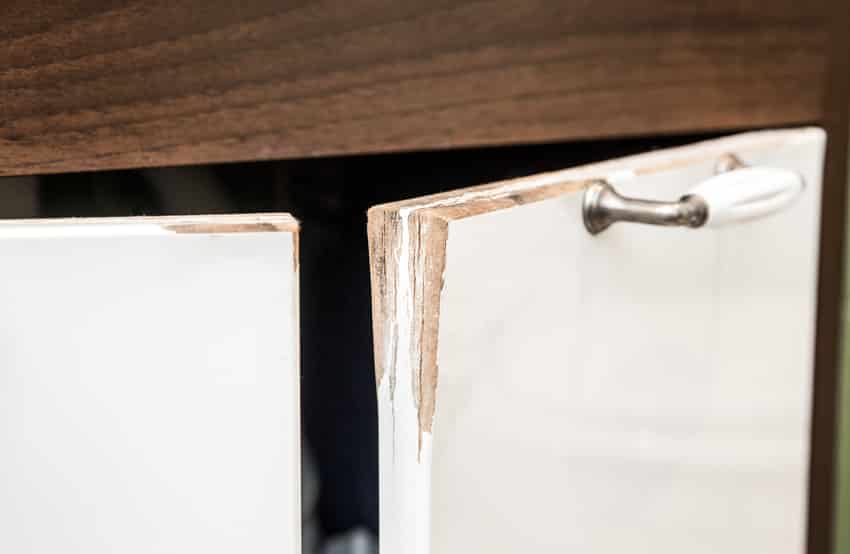
Below are a couple of downsides to using such kinds of cabinets.
Easy to Chip and Peel Off
Anything glued or pressed on MDF and particle boards is prone to peeling off and chipping. Because of this, delamination can happen to laminates, veneers, and even RTF sheets after a decade of use.
Like any other furniture, the longevity of your cabinetry also relies on how you care for them. Aside from keeping them clean, avoid hitting them with blunt and heavy objects to prevent dents.
Less Resistant to Heat
These may be durable, but they still are made from vinyl. That said, they cannot tolerate heat and can deteriorate fast from exposure. Keep them away from a heat source like a stove or an oven.
Heavier than Actual Wood
A common misconception among many is that wood can weigh tons, which is true, especially with dense oak.
But did you know MDF is heavier than solid wood and engineered wood? For this reason, they require more anchors and screws to support the weight of the material.
Durability of Cabinets Made of Themofoil
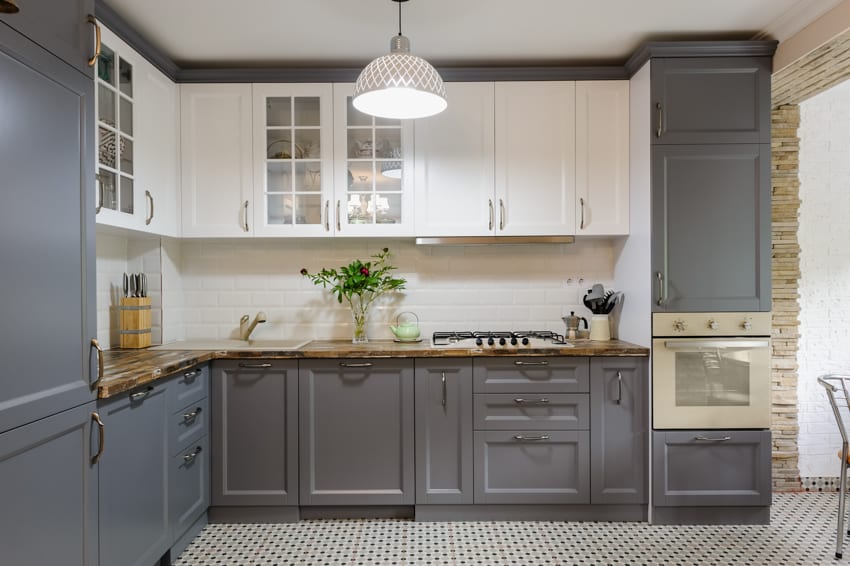
But while they are water-resistant, they are not waterproof. Prolonged exposure of such cabinets to water can still penetrate the MDF, causing them to deteriorate and rot.
As previously mentioned, they do not do well with heat exposure, too. If you want to keep them as long as possible, proper maintenance helps.
Maintenance for Cabinets with Thermofoil Fronts
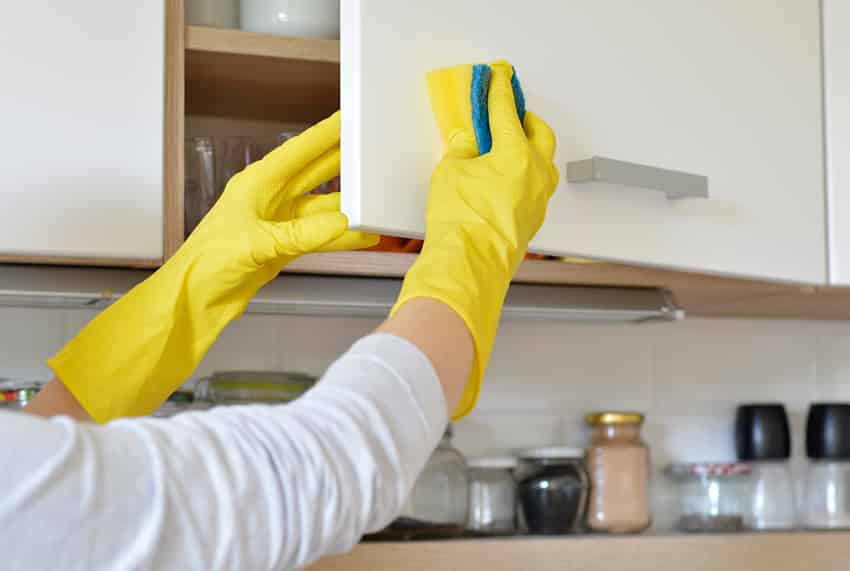
Bathroom and kitchen cabinetry can benefit well from proper ventilation for better air circulation and to remove excess heat.
But as years go by, they can turn dull and sustain damages. Fortunately, you have two options: refacing and painting.
Cabinet Refacing Using Thermofoil
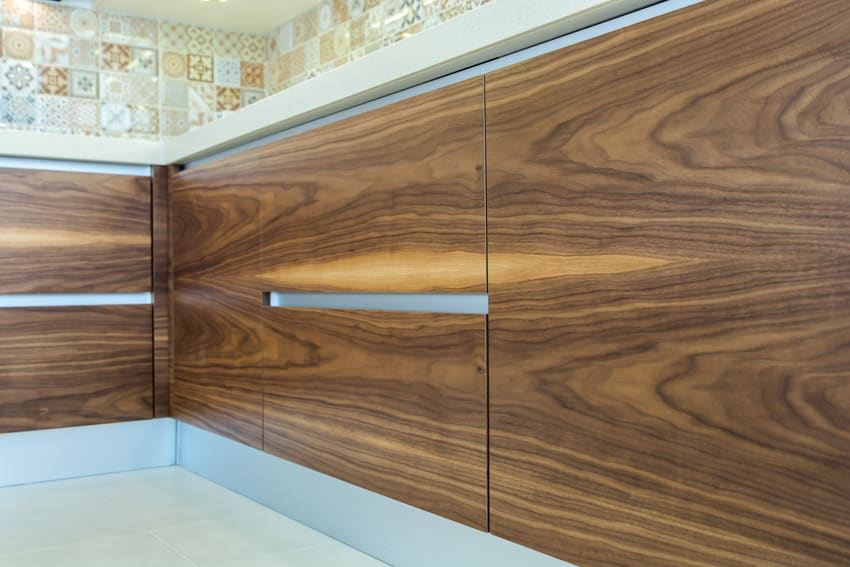
With RTF cabinet refacing, you can give your space a fresh look using different colors and designs. You can also upgrade to wood veneers as an alternative, as they adhere well to MDF and particleboards.
Can You Paint Vinyl Cabinets?
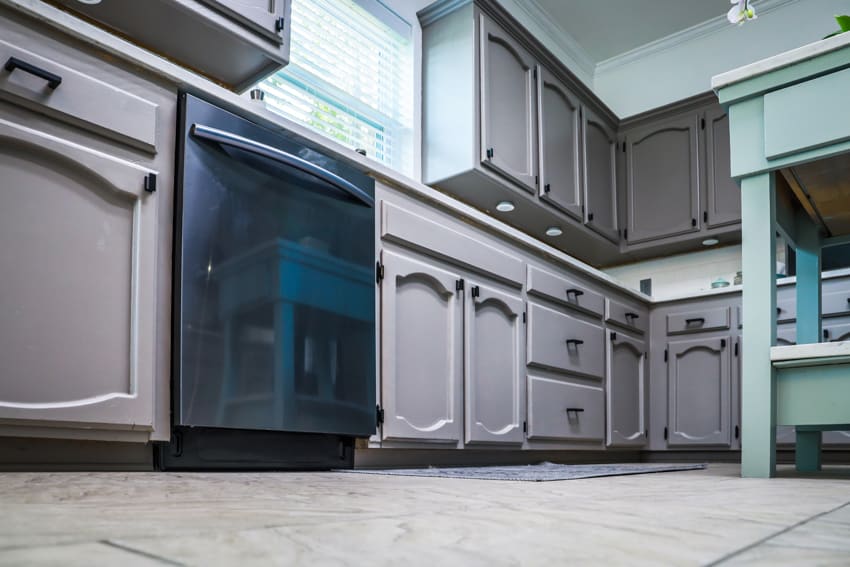
The answer depends on their condition. If they are in pristine condition, you can choose what color to paint using a water-based latex product.
Minimal damage can also be fixed and covered with paint, granted that the MDF is not bloated.
Painting Thermofoil on Kitchen Cabinets
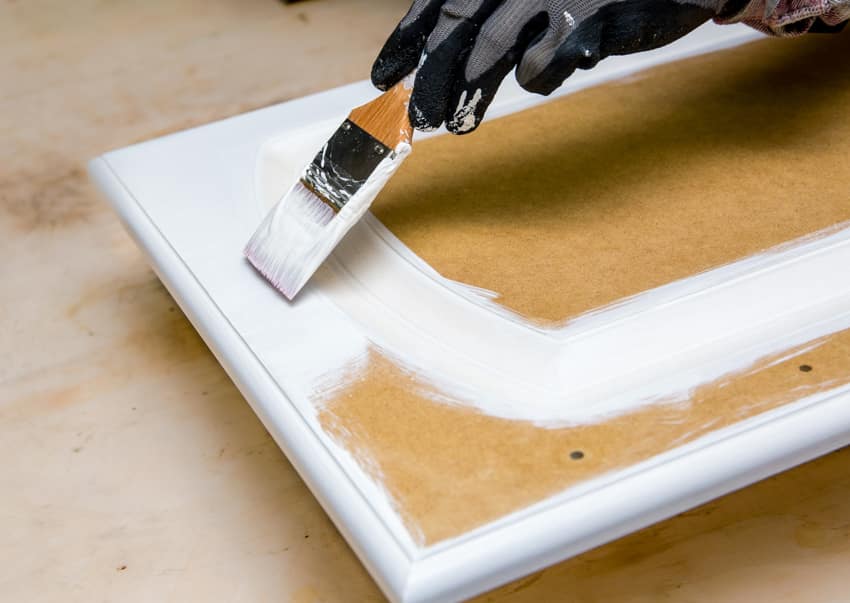
• Apply primer: Once units are clean, sanded, and dry, coat them with primer. For best results, prime your panels twice. Remember to apply another coat of primer after the previous layer dries completely.
• Coat your cabinetry with water-based latex paint: Your painting method is up to you, whether you use a spray or brush. But coat them evenly, one layer at a time.
Similar to applying primer, let the first layer of paint dry completely. You can do this process twice or thrice.
Although you can reface or paint over a cabinet with an ERTF layer, consider the total cost of the job. Again, the condition of your cabinetry is an enormous factor in your decision-making whether to reface, paint, or replace them.
How to Fix Peeling Thermofoil Layers on Cabinets
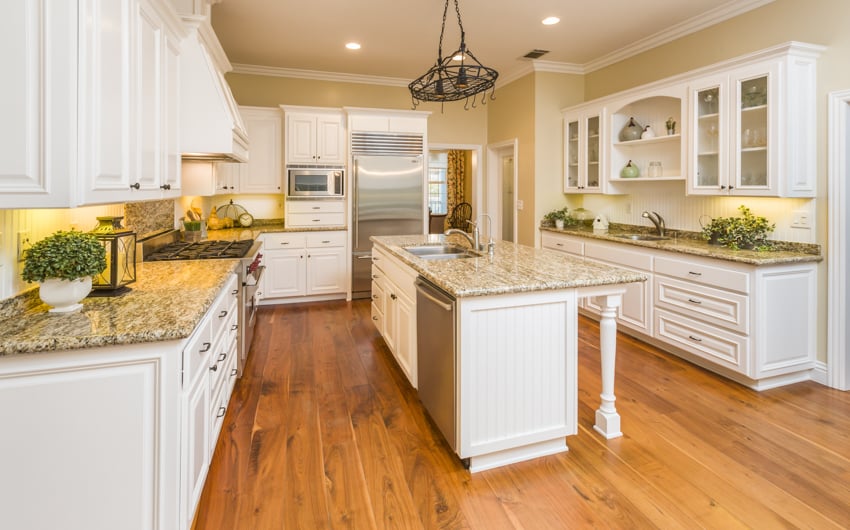
Contact cement is an adhesive that can bond to different substrates, including metal, glass, and wood. This adhesive is resistant to moisture and is easy to apply.
Start by lifting the peeling RTF at an angle that allows you to clean the MDF underneath. Scrape off any dirt and dried cement. Next, you can apply contact cement at the back of the material and on the MDF.
Let the adhesive dry for 10 to 15 minutes before pressing the two surfaces together. Finally, secure both materials with a woodworker’s clamp.
Keep in mind that this is a temporary fix and not advisable for extensive damage. If so, you can replace them with new cabinet doors.
Thermofoil Door Manufacturers

For midrange doors starting at $50 per sq.ft., you can opt for KraftMaid and American Woodmark. Both manufacturers are well known for producing cabinets, especially for kitchen use.
But if you’re willing to spend more on a premium quality door, check out UltraCraft. They cater to luxurious homes and can customize colors and textures to fit your needs. For this reason, expect to pay between $80 and $150 per sq. ft.
Thermofoil Vs Melamine
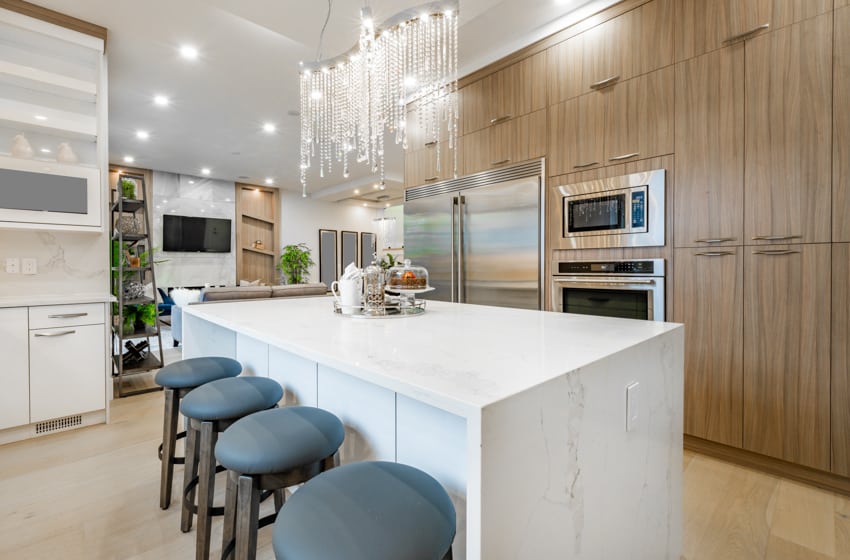
But when it comes to quality, melamine is slightly superior and can be similar to a laminate cabinet.
Thermofoil Vs Wood
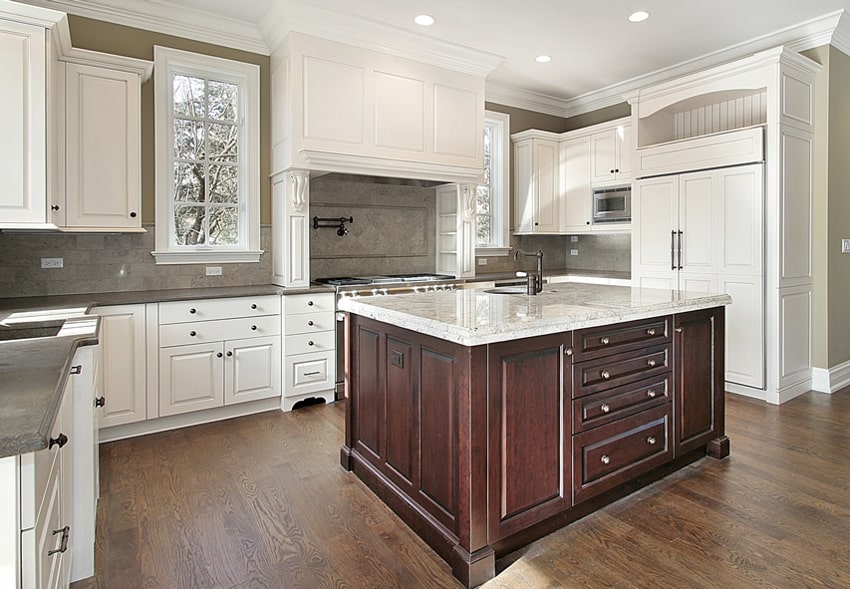
However the maintenance can be daunting as wood is more porous. They are also more expensive and are arduous to install.
Materials like RTF are convenient if you like to change the look of your kitchen several times without having to spend a fortune.
They are also favored for rental apartments as they are easy to maintain. See more related content in our article about the different types of kitchen cabinet materials on this page.

